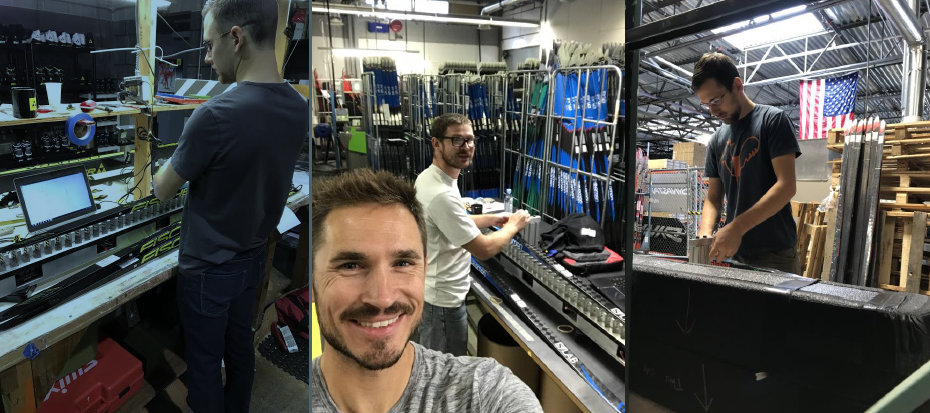
Ski Picking – What does that really mean?
I cannot believe it is almost time for our first ski picking trip of the year. We are planning to visit 7 different race rooms/factories/warehouses/distribution centers between now and the end of September. This will be our most ambitious travel schedule to date. We don’t really like to travel this much but it is necessary to obtain the best skis the industry has produced. If we could snap our fingers and have amazing skis show up on our door step, we would vote for that. The unfortunate truth is the industry as a whole lacks complete control of their process. Before I owned part of a ski shop, I worked as an electrical engineer and a quality/test engineer. This gave me a unique background in production and process improvement. At a former employer, we would strive for Six Sigma… look it up, but basically it means a measure of quality that strives for near perfection, or roughly less than 3.4 defects per million opportunities. That is critically important when building electronics for the aviation industry but maybe slight overkill for the snow sports industry. Just because the ski industry lacks anywhere near total control over their process/quality doesn’t mean they are not striving to get better. They are investing as much as they can in their process but they still don’t have complete control. They are using methods and materials that inherently introduce variability into the end product.
What does this mean for you, the consumer? It means not all skis are created equal. That is important to understand and cannot be understated. Ski companies are charging the same price for the same ski but it is not the same product. Skis are a handmade product, made from things like wood, carbon fiber, foam, and fiberglass and injected with resin and pressed/heated into shape. There is a lot of variability in both the materials and the process. When you sign up for a ski request from Pioneer Midwest, you are not only signing up for a ski that fits you, but a ski that is of the highest quality.
Quality: When people talk about their favorite pair of skis, the thing that makes that happen is the quality, not the fit. The fit is likely in the ballpark, but high quality skis make the ski their favorite. I have a seen a lot of skis that “fit” but are absolute garbage. What makes a quality ski… in our experience, is low and even contact pressure within the glide zones and elastic response under varying loads. The ski industry does not want to talk about the inherent variability in quality for a given ski model. The goal of marketing departments at all ski companies is to portray that one high end ski is just as good as another of the same branded high end ski, implying that just the fit (see below) or snow conditions for said ski are different.
Fit: Most reputable ski shops should be able to find a ski that "fits" i.e. the stiffness of the ski is appropriate to your body weight. The stiffness of the ski needs to be within a range, and actually, those fit ranges are quite large and even larger when the ski is of the highest absolute quality. The difference between a 94kg ski and a 98kg ski is negligible on a “fit” scale, but the quality makes the difference.
More Ski Fitting Info: HERE
More Ski Analysis Info: HERE
Cool article on trees to skis: https://www.nytimes.com/2018/12/28/sports/skiing/from-tree-to-ski-at-the-fischer-family-factory.html
SIGN UP FOR SKI PICKING: HERE
Cores... wood and paper dipped in resin

And cutting the cores into shape
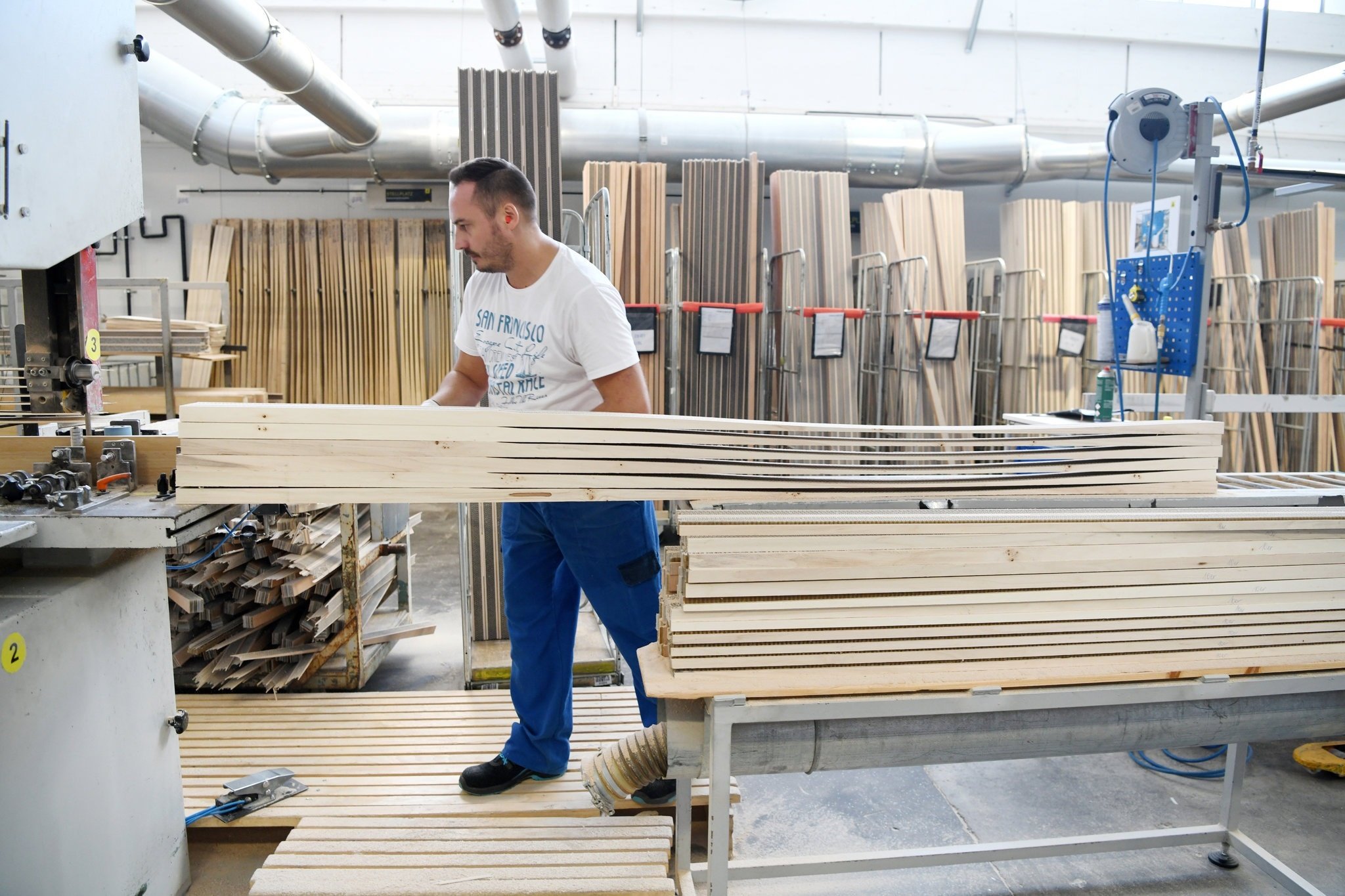
Pre-press, materials get assembled here before pressing
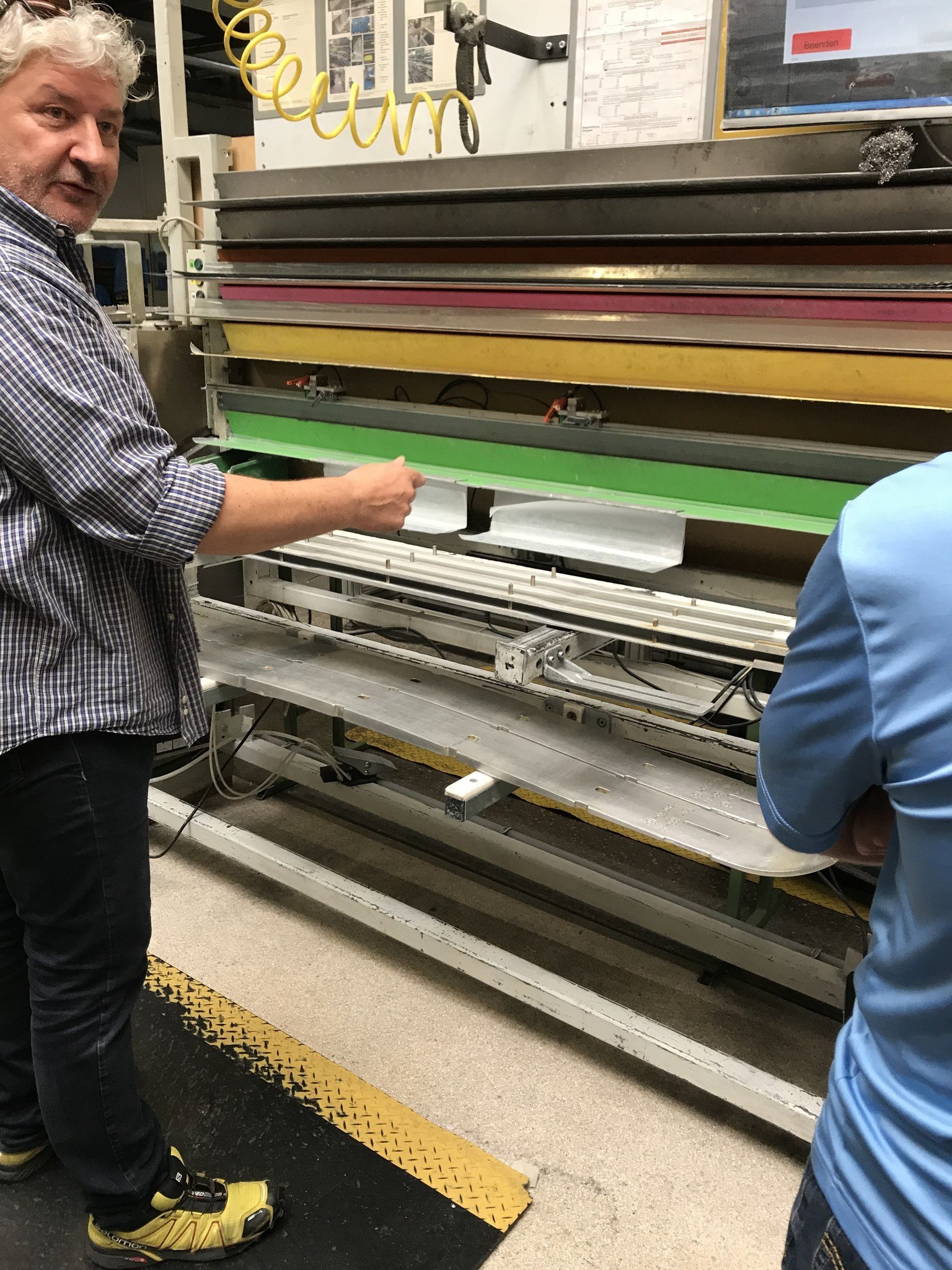
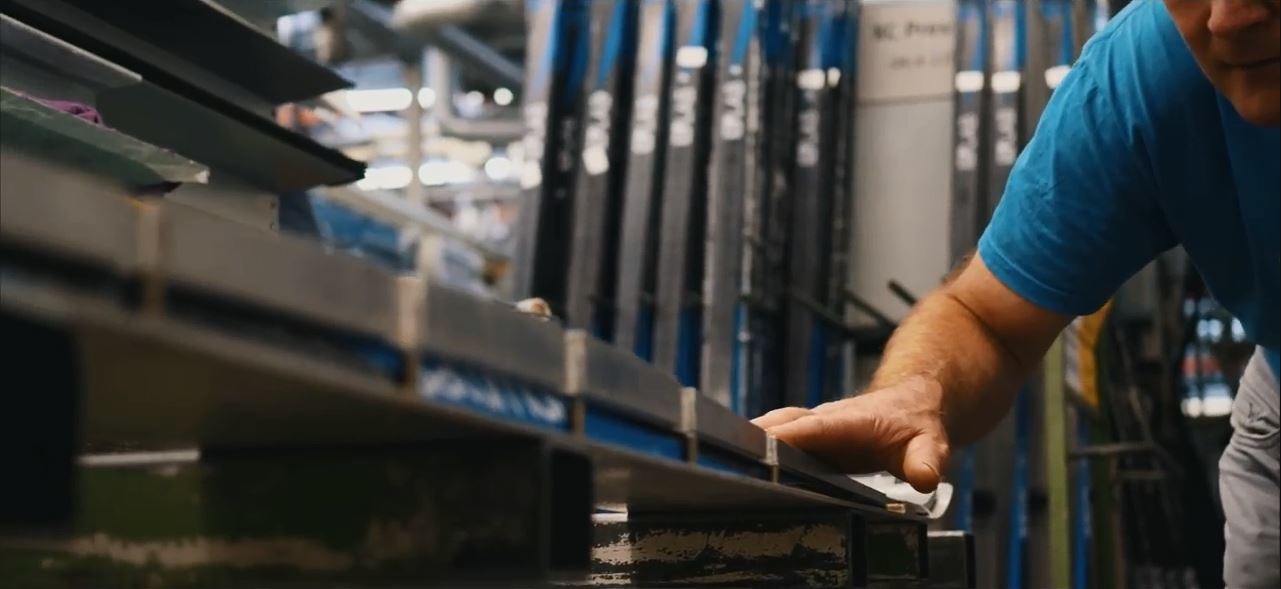
Press... heat and pressure to form into shape

Post pressing, before finish work
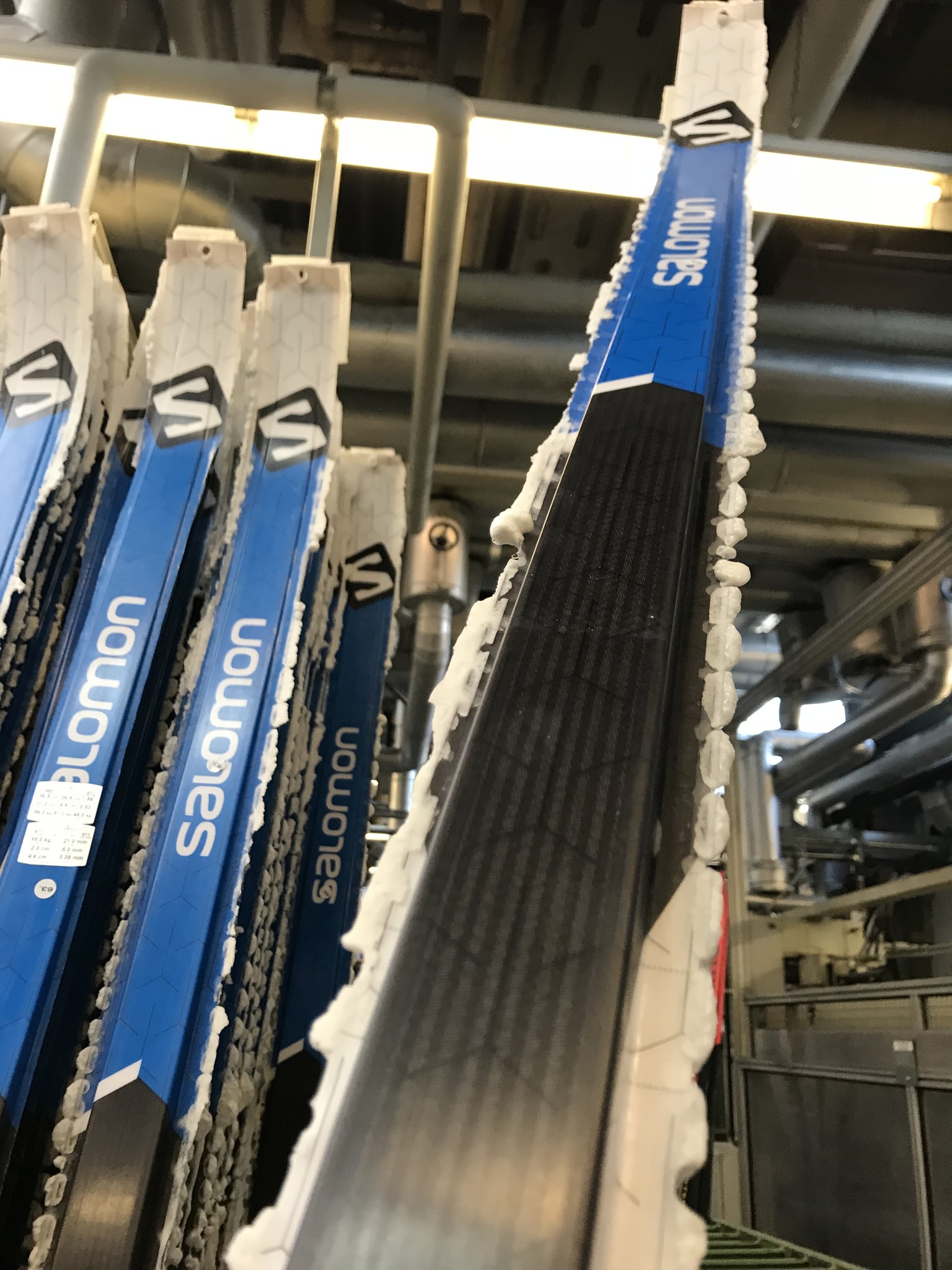
Adam is in the zone after 12hr+ day of picking
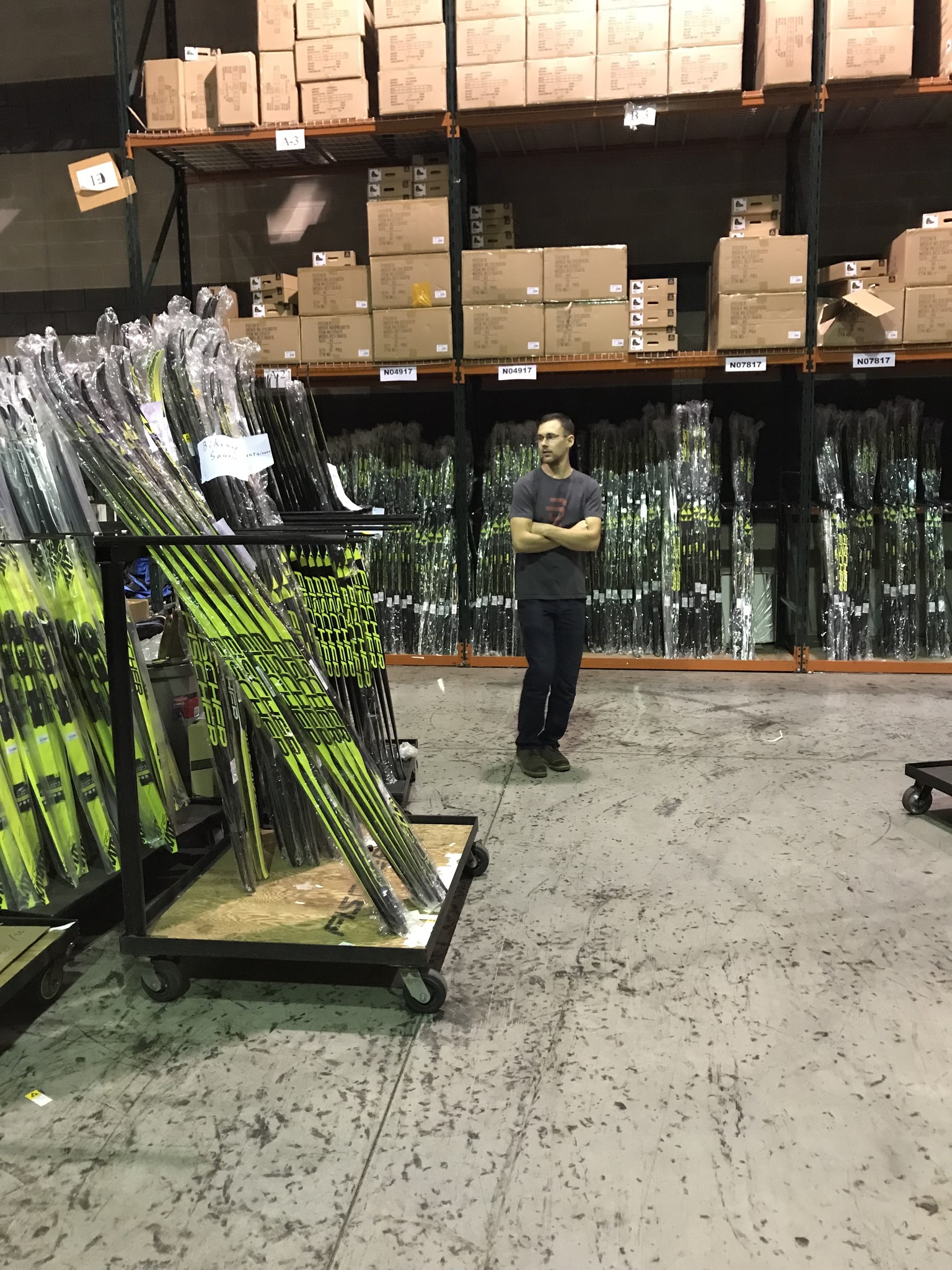
We are serious ski-nerds, lots of testing and multiple methods of testing

Our latest ski tester
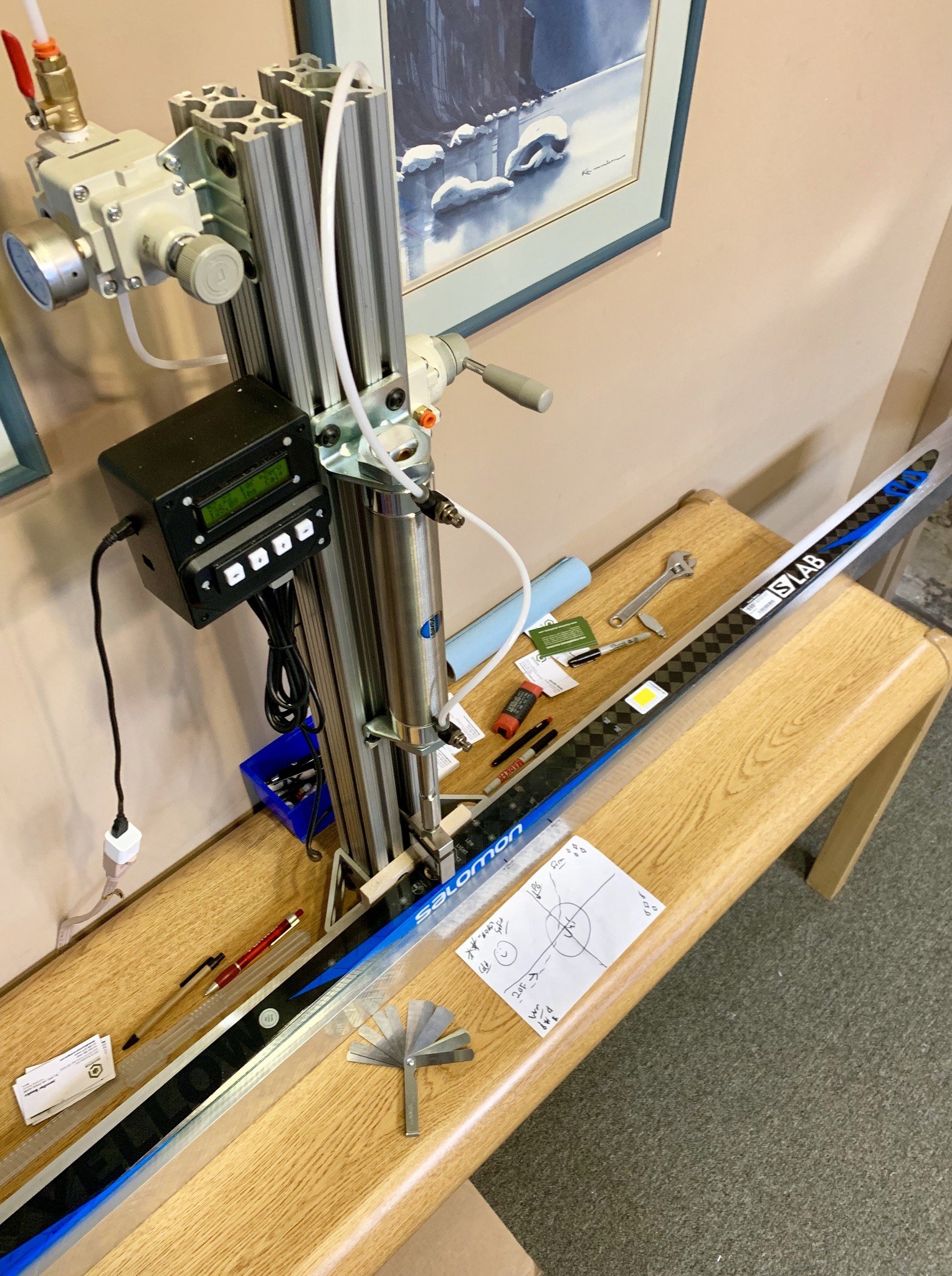
We travel to look at a lot of skis, we bring our flex testers with us to quantify the pre-work with our hands and eyes
